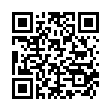|
Digital Information Telecommunication Technologies
Limit bipolar sequences for patchwork-based robust digital audio watermarking
M. Gofman, A. Kornienko
Emperor Alexander I St. Petersburg State Transport University
Abstract:
Ensuring the robustness of digital audio watermarking under the influence of interference, various transformations and possible attacks is an urgent problem. One of the most used and fairly stable marking methods is the patchwork method. Its robustness is ensured by the use of expanding bipolar numerical sequences in the formation and embedding of a watermark in a digital audio and correlation detection in the detection and extraction of a watermark. An analysis of the patchwork method showed that the absolute values of the ratio of the maximum of the autocorrelation function (ACF) to its minimum for expanding bipolar sequences and extended marker sequences used in traditional digital watermarking approach 2 with high accuracy. This made it possible to formulate criteria for searching for special expanding bipolar sequences, which have improved correlation properties and greater robustness. The article developed a mathematical apparatus for searching and constructing limit-expanding bipolar sequences used in solving the problem of robust digital audio watermarking using the patchwork method. Limit bipolar sequences are defined as sequences whose autocorrelation functions have the maximum possible ratios of maximum to minimum in absolute value. Theorems and corollaries from them are formulated and proved: on the existence of an upper bound on the minimum values of autocorrelation functions of limit bipolar sequences and on the values of the first and second petals of the ACF. On this basis, a rigorous mathematical definition of limit bipolar sequences is given. A method for searching for the complete set of limit bipolar sequences based on rational search and a method for constructing limit bipolar sequences of arbitrary length using generating functions are developed. The results of the computer simulation of the assessment of the values of the absolute value of the ratio of the maximum to the minimum of the autocorrelation and cross-correlation functions of the studied bipolar sequences for blind reception are presented. It is shown that the proposed limit bipolar sequences are characterized by better correlation properties in comparison with the traditionally used bipolar sequences and are more robust.
Keywords:
steganography, digital audio, patchwork method, digital watermarking, bipolar sequences, correlation function.
Received: 12.12.2022
Citation:
M. Gofman, A. Kornienko, “Limit bipolar sequences for patchwork-based robust digital audio watermarking”, Informatics and Automation, 22:2 (2023), 221–260
Linking options:
https://www.mathnet.ru/eng/trspy1237 https://www.mathnet.ru/eng/trspy/v22/i2/p221
|

| Statistics & downloads: |
| Abstract page: | 67 | | Full-text PDF : | 38 |
|




 Contact us:
Contact us: Terms of Use
Terms of Use
 Registration to the website
Registration to the website Logotypes
Logotypes







 Citation in format
Citation in format 